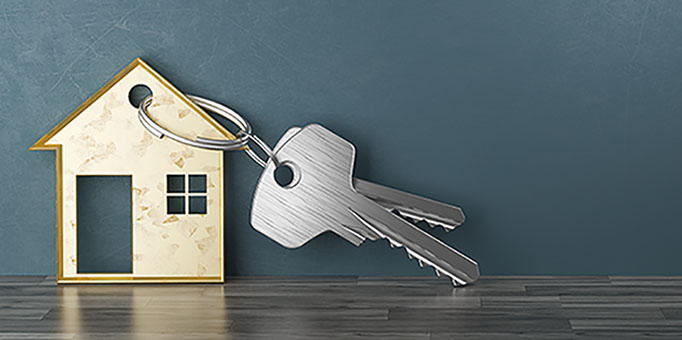Is there such a thing as Good Debt and Bad Debt? How can you tell which is which?
While some people believe that debt can be an incredibly powerful tool to help you create significant wealth, others believe it's the root of all evil. So which is it?
Most of us have some form of debt, usually starting from a young age. Whether it be student loans, store cards, shop now and pay later schemes, payday loans, investment loans for shares and property, or home loans- there’s no shortage of ways for people to fall into debt.
The question then becomes:
With so many debt-producing products out there, are some of them better for us than others?
Good Debt
There are many forms of good debt. However, the granddaddy of all good debt is one that’s connected to an income-producing asset where the income exceeds any costs associated with holding the asset. This is commonly known as positive gearing.
The next best form of debt is also associated with an income-producing asset, however it’s one that allows you to control a high value asset for a small annual out-of-pocket expense. This low out-of-pocket expense can be achieved by offsetting the costs of holding the asset with the income produced by the asset as well as any tax savings associated with holding the asset.
The overall aim is for the annual growth of the asset to outstrip any annual out-of-pocket expenses associated with holding the asset, and this form of debt is commonly known as negative gearing.
This can be achieved because we are outlaying a much lower dollar amount from our pocket and borrowing the rest of the costs to purchase and hold what is a much higher value asset than the initial outlay.
There’s a lot of talk surrounding negative gearing, but let’s look at an example of how it works so that you can better understand the power it can provide to leverage a high worth asset- and why it's classified as good debt.
Example
Frank has $160,000 in savings and wants to invest it in property. He purchases a brand-new apartment for $650,000. He puts in $130,000 of his money and borrows the rest (approximately $520,000) from the bank. Then he spends another $25,000 on legal fees and stamp duty. In total, Frank has spent $155,000 of his money to purchase a property worth $650,000.
The property produces $450 per week in rental income and is rented approximately 48 weeks of the year (allowing for 4 weeks of vacancy). This provides Frank with an income of approximately $21,600 p.a..
After structuring Frank’s bank loan tax effectively, the annual prepayments for the loan are only $23,520, and any other associated ongoing costs for the property come in at around $6,000 p.a., allowing for a total cost of holding the property of $29,520 p.a..
The property also has depreciation associated with it of approximately $12,000 p.a..
At first glance, it doesn’t look like this investment is going too well for Frank, The total costs far exceed the income, with the asset running at an ongoing annual cost of $7,920.
However, once we take into account the total tax savings associated with holding the asset, including any ongoing cash costs and depreciation, the final yearly cost for holding the property drops to approximately $500 - that’s around $40 per month of out-of-pocket expenses to hold a property worth over $650,000 and that's only if you get a Tax Effective specialist to help structure it just the right way for you.

Now let’s say the property grows at a very conservative 4% per annum over a 10-year period (just above the average annual inflation rate). Then the property is worth about $962,158.79.
If he wanted to, Frank could now sell the property for a cash profit of $312,158.79, an almost 200% increase over the initial outlay of $155,000 that he invested.
The annual cash outlay of $500 per annum to help fund the investment comes to a grand total of only $5,000 over the 10 years. This $650,000 apartment was held in an almost cash flow neutral environment by Frank for over 10 years, and managed to provide an almost 200% return on his initial investment. That’s approximately 20% growth each year over the 10-year period.
There are not many investments out there that can provide that sort of return and/or have the bulk of the investment funded by your tax savings and the tenant. You are only limited by your capacity to borrow and the tax you can save against.
As we can see, leveraging with debt can be a powerful wealth creator for people, and provides a good use of debt over the medium to long-term.
Other examples of good debt include investing in yourself, such as student loans to help you obtain a higher-paying job, or leasing a vehicle that helps you bring in new income for work.
Leasing also helps because it allows you to have a low initial outlay to purchase a vehicle, or anything else for that matter, if you are carrying on a business - which is then used to help you produce income. These are just some examples of what can be classified as good debt.
Good debt helps you produce passive income, capital growth or higher personal/work income, to ultimately help you grow your wealth and also offset any initial income-producing asset costs until a later date.
Bad Debt
Bad debt is generally any debt that does not help you increase your wealth or income in any way. And no, purchasing a new suit on your credit card that you say you’ll also wear to work does NOT count as an income-producing asset (no matter how much you’d like it to).
If you’re running up credit card debt and NOT paying it off at the end of the month before high interest kicks in, then it’s a bad debt.
Purchasing a car, while necessary, if not used to create income would generally not be a good debt to be in because it’s a depreciating asset and over time will be worth much less than what you originally paid for it. In most instances when you purchase a new car, as soon as you leave the dealership the value of the vehicle drops between $5,000 - $10,000 and the value continues to plummet from there.
Shop now and pay later schemes can also be perilous because they allow people to get themselves into debt without even realising it. If you cannot pay for it within an interest free and fee-free period, then you shouldn’t be purchasing it.
Cash advance loans and pay day loans can be some of the most damaging types of debt you can get yourself into, especially if you cannot pay off the loan quickly (which is the case more times than not).
While there is a time and place for these types of debt products and they do serve a need for the public, most people do not understand the traps associated with them and are better off steering clear of them.

As you can see, debt can be an effective tool to help you leverage opportunities and create significant wealth.
I hope this has helped you better understand how you can make debt work better for you and how to tell the difference between a good debt and a bad debt.
If you’d like to know more about how you too can implement strategies like the one above, please provide your details on the form below and discuss this further with a Tax Effective specialist.
We're always here to help turn the tax system to your advantage and to help you build your wealth rapidly, and most importantly, tax effectively.


